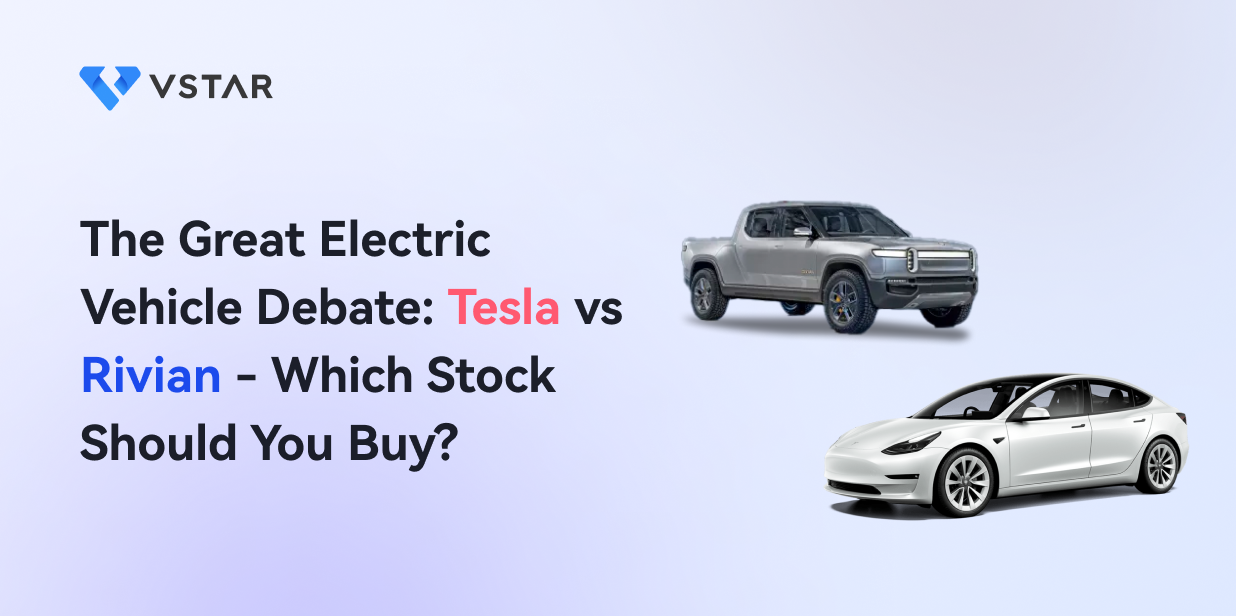The electric vehicle (EV) industry is one of today's most exciting and fast-growing sectors. With the increasing demand for clean and sustainable transportation, EVs should dominate the global car market soon. According to a report by BloombergNEF, EVs will account for 58% of new passenger car sales and 31% of the global car fleet by 2040.
But here's the kicker: Among the many players in the EV industry, two companies stand out as the most innovative and influential: Tesla and Rivian. Tesla is the undisputed leader in the EV market, with a loyal fan base, a visionary founder, and a diverse product portfolio. Rivian is a newcomer that has attracted much attention and investment for its rugged and adventurous SUVs and trucks. Both companies plan to expand their market share and revolutionize the EV industry.
It’s essential to compare these companies to guide investors who want to ride the EV wave in knowing which is a better investment opportunity. Here, we’ll compare both companies on various aspects, discuss how to trade Tesla and Rivian stock and then give our recommendation on which stock is the better buy right now based on our analysis. Sounds good? Let's dive in.
Rivian vs Tesla: Business Models and Product Portfolios
Tesla and Rivian have different business models and product portfolios that reflect their vision and strategy in the EV industry. Let's look at how they differ and what they offer to customers.
Business Model

Tesla's business model depends on vertical integration, direct sales, and a focus on affordability. Tesla designs, manufactures, sells, and services its vehicles, producing batteries, solar panels, and other energy products. Tesla sells its cars directly to customers through its online platform and stores, bypassing traditional dealerships and intermediaries. Tesla also aims to make its vehicles more affordable and accessible to the mass market by reducing costs and increasing production efficiency.
Rivian, on the other hand, has a business model focused on SUVs and trucks at higher price points, with plans to target commercial fleets. Rivian is a relatively new entrant in the EV industry, founded in 2009 and launching its first vehicles in 2021. Rivian produces electric SUVs and trucks designed for adventure and off-road driving. Rivian also plans to leverage its platform technology to provide electric delivery vans for commercial customers like Amazon.
Product Portfolio
Tesla's product portfolio consists of four main vehicle models: Model 3, Model Y, Model S, and Model X. Model 3 and Model Y are Tesla's best-selling models, targeting the mid-range sedan and crossover segments, respectively. Model S and Model X are Tesla's premium models, offering high performance and luxury features. Tesla also has several upcoming models in the pipeline, such as Cybertruck, Semi, Roadster, and Model 2.
Rivian's product portfolio comprises two main vehicle models: R1T and R1S. Rivian's R1T is an electric pickup truck offering a range of up to 400 miles, a towing capacity of up to 11,000 pounds, and a 0-60 mph time of 3 seconds. The R1S electric SUV offers similar performance and features as the R1T but with more passenger space and cargo capacity. Rivian also has an upcoming model in the pipeline: R1V, which is an electric delivery van that can carry up to 200 packages.
Pros and Cons

Tesla vertically integrates its supply chain, vehicles, batteries, and sales. This gives it more control, innovation, and scale. It also has a loyal fan base. However, it faces high costs, complexity, regulation, and competition. It also has customer issues such as quality, service, software, and safety. It risks losing market share to rivals.
Rivian, on the other hand, focuses on SUVs and trucks for adventure and commercial customers. This gives it a niche market, a strong value proposition, and strategic partnerships with investors like Amazon. However, it faces high costs, limited capacity, delayed delivery, and unproven demand. It also has technical issues, legal disputes, and environmental concerns. It risks losing its competitive edge to other EV makers.
Tesla and Rivian have different strengths and weaknesses in their business models and product portfolios. Tesla has a clear advantage in market share, brand recognition, product diversity, and cost efficiency. Rivian has a clear advantage in product differentiation, customer satisfaction, partnership potential, and platform scalability.
Rivian vs Tesla: Financials and Growth Prospects

Tesla and Rivian have different financials and growth prospects that reflect their performance and potential in the EV industry. Let's look at how they differ and what they offer to investors.
Financial Metrics
Tesla's financial metrics highlight its size and establishment compared to Rivian. In 2022, Tesla's revenue was $81.5 billion, up 51.35% YoY, while Rivian's reached $0.6 billion, up 23% from 2021. Tesla's gross margin was 23.13%, and Rivian's was -188.36%. Tesla's net income was $11.778 billion, while Rivian faced a net loss of $-1.723 billion.
Tesla's balance sheet and cash flow are stronger. Their total assets increased by 32.52% YoY to $82.3 billion, while Rivian's dropped by 19.82% to $17.9 billion. Tesla's total debt decreased by 69.55% to $1.597 billion, while Rivian's rose by 0.41% to $1.231 billion. Tesla's operating cash flow grew 28.07% to $14.72 billion, while Rivian's shrank 13% to -$1.74 billion.
Tesla's P/S ratio (6.4225) indicates a more reasonable valuation compared to Rivian's (6.78914). Tesla's ROE (27.29%) shows higher financial efficiency in generating profits than Rivian's (-37.50%). Overall, Tesla outperforms Rivian in profitability, efficiency, and solvency, with better valuation and returns.
Growth Potential
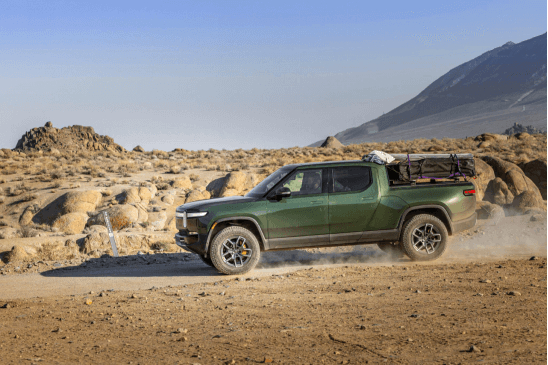
Tesla's growth potential depends on its ability to maintain market leadership, expand its product portfolio, and tap into new market segments. Tesla has a loyal customer base willing to pay a premium for its vehicles and services. Tesla also has a diverse product portfolio that covers various segments and price points in the EV market. Tesla also has opportunities to grow from new market segments like commercial/fleet vehicles, autonomous driving features, vehicle software, etc.
Rivian's growth potential depends on its ability to deliver its vehicles on time, satisfy customer demand, and scale its platform technology. Rivian has a high customer demand for its vehicles, with over 114,000 pre-orders as of November 2022. Rivian also has a unique product differentiation that appeals to customers who want adventure-ready vehicles with rugged, versatile, and innovative properties. Rivian also has opportunities to grow from its platform technology that can get used to providing electric delivery vans for commercial customers like Amazon.
Both companies have different sources of growth and different challenges to overcome. Tesla has a more established and diversified growth engine but faces more competition and disruption. Rivian has a more niche and focused growth engine but faces more uncertainty and execution risk.
Rivian vs Tesla: Competitive Positioning and Risks
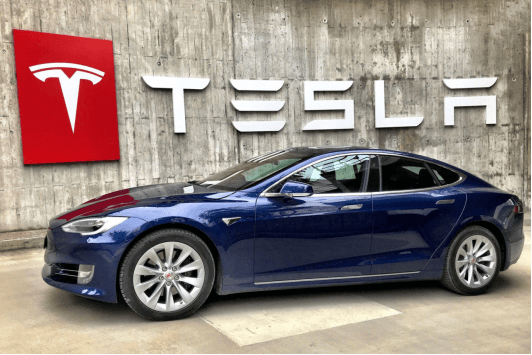
Tesla and Rivian differ in their competitive positioning and risks in the EV industry. Here is how they compare and what they offer to investors.
Competitive Positioning
Tesla leads the EV market with its brand power, first-mover status, and innovation. Tesla attracts customers and investors with its vision, technology, experience, and network. Tesla improves its products and services constantly.
Rivian differentiates itself in the EV market with its product design, customer satisfaction, partnership potential, and platform scalability. Rivian's vehicles are for adventure and off-road driving, which appeals to a niche but loyal segment. Rivian provides quality and service to its customers. Rivian leverages its platform technology to provide electric delivery vans for commercial customers like Amazon. Rivian produces vehicles faster and cheaper than other EV makers.
Risks
Tesla's risks include production challenges, safety recalls, lack of profitability, competition, and high spending. Due to supply chain, labor, and capacity issues, Tesla struggles to meet customer demand and maintain quality standards. Tesla faces safety recalls due to vehicle or software defects or malfunctions. Tesla lacks profitability due to its high expenses and low margins. The company competes with other electric vehicle makers such as Ford, General Motors, Nissan, Nio, and Honda, as well as traditional automakers and new entrants. Tesla spends a lot on expansion plans and R&D investments.
Some of the risks that Rivian faces include technical issues, legal disputes, environmental concerns, unproven customer demand, and delayed delivery dates. Technical issues such as battery performance, software glitches, and autonomous driving features could affect product quality and reliability. Legal disputes from Tesla and other parties could harm its reputation and business operations. Environmental concerns due to its use of rare earth metals and lithium in its batteries could pose ethical and ecological challenges. Unproven customer demand due to its lack of sales history and market feedback could affect revenue and growth projections. Delayed delivery dates due to production bottlenecks, regulatory approvals, and supply chain issues could disappoint customers and investors.

Tesla and Rivian each confront unique risks, but those faced by Tesla are more consequential. Risks for Tesla can impact its market dominance, brand strength, innovation, and affordability, while Rivian's risks may influence product distinctiveness, customer satisfaction, partnership opportunities, and platform scalability.
Rivian vs Tesla: Stock Performance and Valuation
Tesla and Rivian are popular EV stocks that have attracted much attention from investors and the media. But how do they compare in terms of stock performance and valuation? Let's look at some key metrics and factors that could affect their future stock prices.
Historical and Current Stock Prices
Tesla has traded publicly since 2010, whereas Rivian went public in November 2021. Tesla's stock price has increased by over 18,000% since its IPO, reaching an all-time high of $409.97 on November 4, 2021. Rivian's stock price has risen by over 60% since its IPO, reaching a high of $172.01 on November 16, 2021. As of April 26, 2023, Tesla's stock price is $160.67, while Rivian's is $12.00.
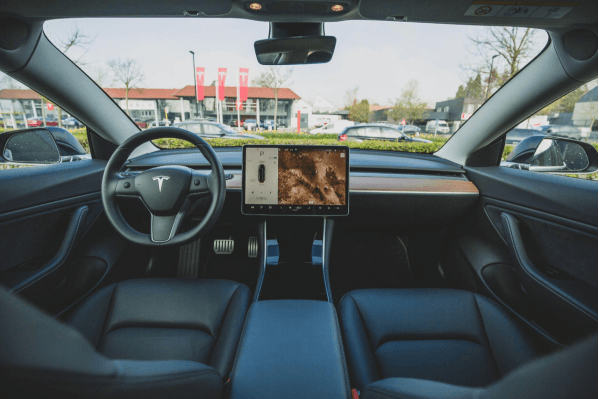
Volatility
Both Tesla and Rivian have experienced high volatility in their stock prices, reflecting the uncertainty and speculation surrounding the EV industry. Tesla's stock price fluctuated between $108.81 and $228.52 in the past six months, while Rivian's stock price fluctuated between $12.36 and $35.15 in the same period. External factors such as market conditions, regulatory issues, supply chain disruptions, and competition affect both stocks.
Valuation metrics
One way to compare the valuation of different stocks is to use the price-to-sales (P/S) ratio, which measures how much investors pay for each dollar of revenue the company generates. A lower P/S ratio indicates a more undervalued stock, while a higher P/S ratio indicates a more overvalued stock. As of April 26, 2023, Tesla had a P/S ratio of 6.48, while Rivian had a P/S ratio of 6.64. This means that investors are paying a little more for Rivian's revenue than for Tesla's revenue.
Future Growth and Stock Drivers
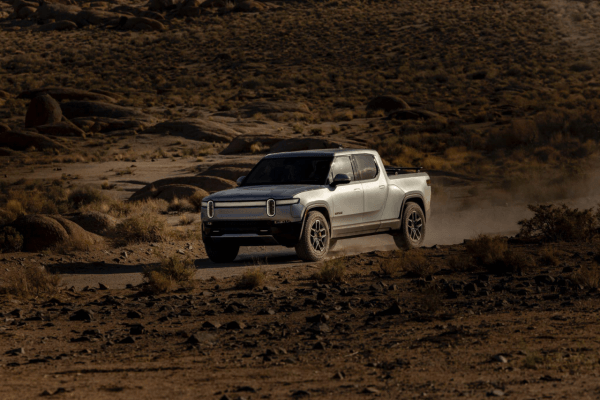
Both Tesla and Rivian have ambitious plans to expand their product portfolios, enter new markets, and innovate in areas such as autonomous driving, battery technology, and software. Some of the factors that could drive their stock prices higher or lower in the future include:
Demand for EVs
The global EV market should grow at a compound annual growth rate (CAGR) of 17.02% from 2023 to 2027, reaching $858 billion by 2027. This creates a massive opportunity for both Tesla and Rivian to increase their sales and market share. However, it also increases the competition from other EV players, both established and emerging.
Product Differentiation
Tesla and Rivian have different product strategies that appeal to different segments of customers. Tesla focuses on mass-market vehicles that are affordable and accessible to a wide range of consumers, such as the Model 3 sedan and the Model Y crossover. Rivian focuses on premium vehicles that target adventurous and environmentally conscious customers, such as the R1T pickup truck and the R1S SUV. Both companies also plan to launch new models, such as the Cybertruck and the Semi for Tesla, the R2X compact SUV, and the Amazon delivery van for Rivian. The success of these products will depend on their ability to meet customer expectations, differentiate from competitors, and overcome production challenges.
Innovation and Technology
Tesla and Rivian are popular for their innovation and technology leadership in the EV industry. They invest heavily in research and development (R&D) to improve their battery technology, autonomous driving features, vehicle software, charging infrastructure, and manufacturing efficiency. These innovations could give them a competitive edge over other EV players and increase their profitability and customer loyalty. However, they also face technical risks such as safety issues, cyberattacks, regulatory hurdles, and intellectual property disputes.
Tesla seems more undervalued than Rivian based on its lower P/S ratio, stronger financials, larger market share, and more diversified products. Tesla has proven its ability to deliver high-quality vehicles at scale, generate profits, and innovate in the EV industry.
Both companies have their own merits and challenges in the EV industry. The success of each company depends on various factors such as customer demand, product quality, cost efficiency, innovation, brand loyalty, and regulation. Tesla has an edge over Rivian in most of these factors.
However, if you’re looking for a long-term investment in the EV industry, we think that both Tesla and Rivian are good buys. Tesla gives you more value, growth potential, stability, and innovation than Rivian. Rivian gives you more opportunities, excitement, novelty, and adventure than Tesla. You can invest in both companies if you want to diversify your portfolio and support the EV revolution.
Rivian vs Tesla: Which is the Better Buy in EV Stocks?
Tesla and Rivian are attractive EV stocks that expose investors to the fast-growing and disruptive EV industry. Both companies have strong visions, innovative products, and loyal customers. However, they face significant challenges like competition, regulation, production, and profitability.
Based on our analysis of their business models, product portfolios, financials, growth prospects, competitive positioning, risks, stock performance, and valuation, we think that Tesla is the better pick among them today. Tesla has a more established and diversified presence in the EV market, a more solid and sustainable financial foundation, a more reasonable and attractive valuation, and a more proven innovation and delivery track record. Rivian, while promising and exciting, is still too risky and expensive for us to recommend as a buy at current prices.
Of course, this does not mean that Tesla is without flaws or that Rivian will fail. Both companies have their strengths and weaknesses, and both could surprise us with new developments and achievements. The EV industry is dynamic and evolving, and investors should always do their own research and due diligence before making any investment decisions.
How to Trade Tesla Stock or Rivian Stock?

You can trade Tesla stock or Rivian stock in three ways: holding shares, options trading, and CFDs trading. Each way has benefits and drawbacks depending on your goals, risk, and capital.
Holding Shares
You buy and own stocks and gain from price increases and dividends. You need a lot of capital, pay fees, face price drop risk, and may have trouble selling. This method suits long-term investors and those who want a stake in the company’s decision-making process.
Options Trading
You buy or sell contracts that let you buy or sell the stocks at a set price and time. You can use leverage, go short or long, and hedge or make complex strategies. You must be right about the price direction and timing, understand risk factors, and pay higher fees. Trading options gives you a call option, which means you can buy the stock at the strike price before the expiration date.
There’s also a put option which allows you to sell the stock at the strike price before the expiration date. Call options give you the right to buy a stock at a set price, while put options grant the right to sell. These options allow you to profit from price movements with limited losses to the premium paid. This is good for experienced traders who have a clear view of the price and are willing to take more risk for more reward.
CFDs Trading
You buy or sell contracts that follow the price of the stocks without owning them. You can use leverage, go short or long, and trade various assets. You face different prices, spreads, fees, and terms from different brokers, pay overnight fees, and have no voting rights or dividends. This is good for traders who want to access the asset at a lower cost, ease of execution, and the ability to go long or short.
Among these three ways, we recommend CFDs trading as the best option for traders looking to trade Tesla stock or Rivian stock. CFD trading offers several advantages over holding shares and options trading, such as lower transaction costs, leverage, flexibility, and diversification. To start trading CFDs on Tesla stock or Rivian stock, you need to find a reputable broker that offers CFDs trading on various assets. You must also develop a trading strategy that suits your goals, risk appetite, and capital.
One of the best brokers that offer CFDs trading on Tesla stock or Rivian stock is VSTAR. VSTAR is a leading online platform that provides traders access to thousands of financial instruments across multiple markets. VSTAR offers competitive spreads and fees, fast execution speeds, advanced trading tools, and excellent customer service. VSTAR also provides educational resources and social trading features that help traders learn from each other and copy successful strategies.
Why Trade Tesla Stock and Rivian Stock CFD With VSTAR?
By trading CFDs on Tesla stock or Rivian stock with VSTAR, you can enjoy the following benefits:
Lower transaction costs: VSTAR doesn’t charge commissions or hidden fees for CFD trading. You only pay the spread between the buy and sell prices of the contract.
Flexibility: VSTAR allows you to trade CFDs on Tesla stock or Rivian stock 24/5, from Monday to Friday. You can also go long or short on the stock, meaning you can profit from rising and falling prices. You can also close your positions before the contract expires, giving you more trade control.
Diversification: VSTAR allows you to trade CFDs on assets besides Tesla stock or Rivian stock, such as currencies, commodities, indices, and cryptocurrencies. This way, you can diversify your portfolio and reduce your exposure to a single market or asset.
Conclusion
Tesla and Rivian are attractive EV stocks, but Tesla is the better pick today based on our analysis. Rivian is a newcomer that has plenty of capital and potential, but has yet to prove its profitability and scalability. Tesla is a market leader that has delivered profits at scale, and has a strong competitive advantage in the EV industry.
However, investing in Tesla is not without risk. The company still faces challenges such as production bottlenecks, safety recalls, regulatory hurdles, and rising competition. Rivian, on the other hand, has strong backing from Amazon and Ford, which could help it overcome some of the obstacles it faces.
We suggest you consider taking a starter position in your final pick (Tesla or Rivian or both) soon and watch how it performs in the coming months. The EV industry is dynamic and evolving, and you should always do your research and due diligence before making any investment decisions.
